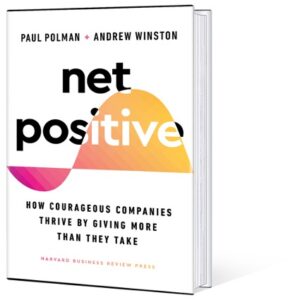[I haven’t written much lately. Kind of overwhelmed with the pace of change and a bit of watching and waiting. I have more to say soon, but here are a couple of LinkedIn posts I did last week on a trip to China and the idea of remaking manufacturing here in the U.S. (one of the reported purposes of the tariffs). I’ll reiterate my caveat below: a trip to China is not an in depth analysis of an entire country, nor is it reflecting all that could be said that’s important — e.g., a discussion about human rights abuses. With that said…]
Post 1: A Week in China [See discussions]
I just spent a week in China.
A few quick economic and cultural observations (with the upfront caveats that I’m not assessing a whole country and its full range of riches and poverty, much less addressing human rights issues).
***1. A labor-heavy economy***
With 850 million working-age people, labor remains a key advantage. You see it in small things…at a hotel, at a meeting of 100 people, two people ran a slow coffee maker to hand us coffees. Nice personal service, but not effective. At a much larger level, we visited both a contract manufacturer (Chinese-owned) and US-run factory making the same stuff. The latter had far, far fewer people in it.
Takeaway: Even if destructive tariffs could magically bring manufacturing back to the US (which would take years, btw), why would there be a job boom (automation dominates)?
***2. World-class infrastructure.***
Abundant EVs and renewables, pristine highways and bridges, sleek airports, clean and fast subways and trains…with seamless phone payments. This was not just in Hong Kong but also Nanjing, a beautiful, historic (capital during the Ming dynasty), so-called “secondary” city…which in China means 10 million people!
Takeaway: If this is a ‘developing country’, the rich countries should be operating on all cylinders. But no, in the US right now, instead of investment in roads, schools, and other societal infrastructure for the future, we have a rising autocracy that wants to tear down everything that’s shared.
A few trivial observations:
- There’s something against cold drinks (reminds me of the EU at times). We Americans may be obsessed with it, but where’s the ice?
- I saw a ton of merchandise for just one sports team, and not from a global sport like soccer or basketball. Nope, just The New York Yankees. Most often a beige hat (not team colors) with white lettering, worn by trendy young people.
- In my full day of being a tourist in Nanjing, I think I saw literally zero other non-Asians. I was a curiosity. Maybe outside of big cities like Shanghai, Beijing, and Hong Kong, it’s mainly untrodden ground for tourists.
Takeaway: Being in a young, vibrant, rising, technologically advanced country while we implode was quite a contrast.
[See the surprising amount of discussion on LinkedIn on cold water. There was also some debate about calling China ‘young’, since it is getting older. Fair enough. So maybe the better word is ‘new’ or ‘shiny’ in referring to the level of investment there.]
Post 2: Building U.S. Manufacturing [See discussions]
I posted yesterday some very topline (ok, admittedly superficial) observations from a week spent in China.
In discussing what I observed in factories, I made an aside that, even if tariffs alone could drive manufacturing growth in the US, it would take ‘years’ to build that capacity.
One reader was very offended and said it wouldn’t take long (telling me to “shut up. just shut up.” Side note for another day: the tenor of conversations on social media has long sucked, but it’s getting worse on LinkedIn also).
But let me ask the assembled wisdom here: how long would it take to build the capacity that we’ve outsourced to and buy from outside the US.
A year? A few years?
My answer is that the most likely number is…infinite. We can never build it.
Some quick, very big picture stats. China has about 31% of the global manufacturing capacity (and has 6 million manufacturing enterprises). The US has 16% of capacity, so we already do make a LOT of things.
Ok, the US is about 25% of world GDP, so how much of China’s capacity are we buying? I’m sure the number exists, but is complicated. Let’s say it’s 25%. Thus we would need to build roughly 7.5% of global capacity here…i.e., add about 50% more manufacturing capacity than we already have.
Is that possible? Maybe, but seems really unlikely in light of the siting, land, energy, permitting, and staffing needs (at a time when we’re DIScouraging immigration and deporting workers).
Of course we can expand manufacturing in smart ways — the two big bills of the Biden era, the IRA and the CHIPS act, did exactly that. ($30-$50 billion in investment in CHIPS alone).
But still, there are some very good reasons the supply chains we have developed as they did. “Comparative advantage” has been a thing since at least Adam Smith.
Thoughts?


